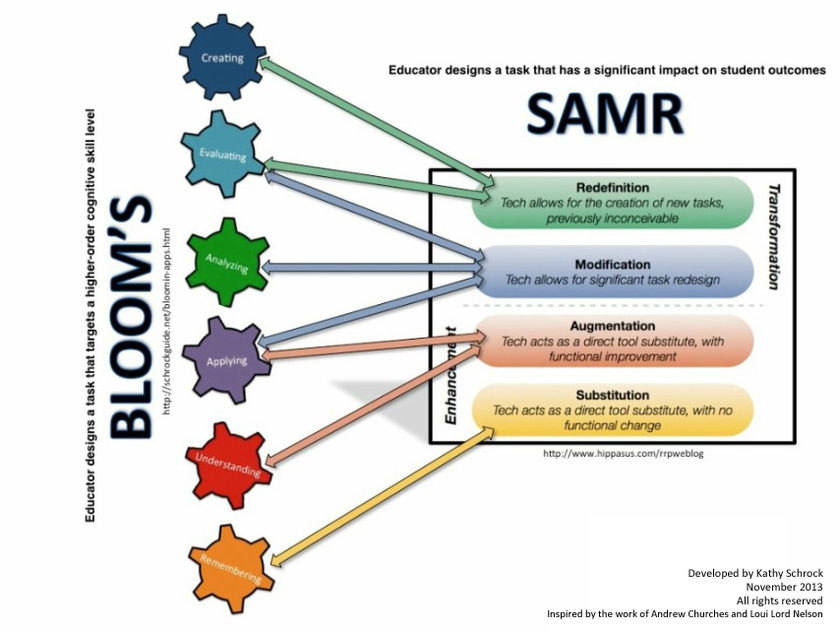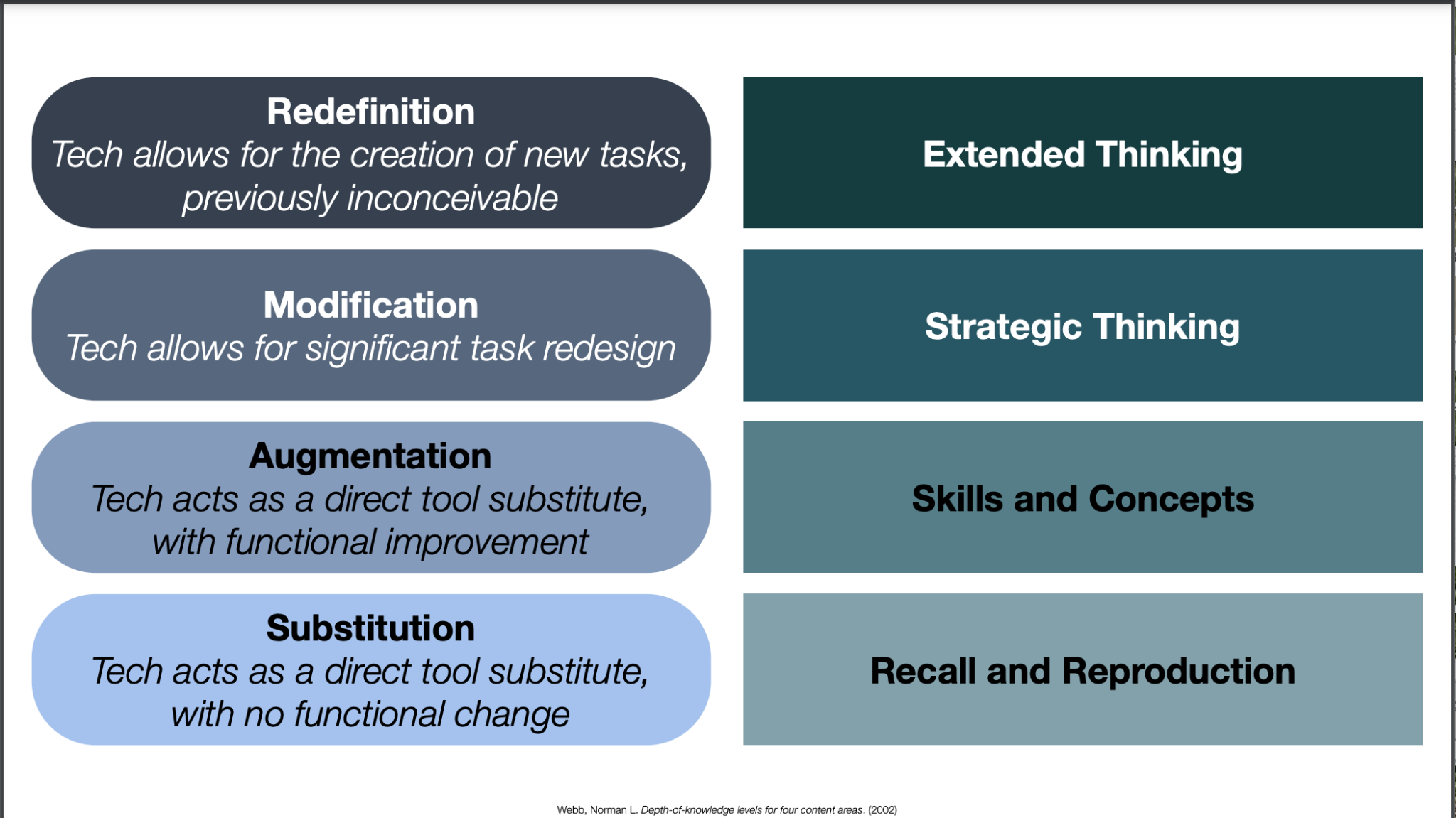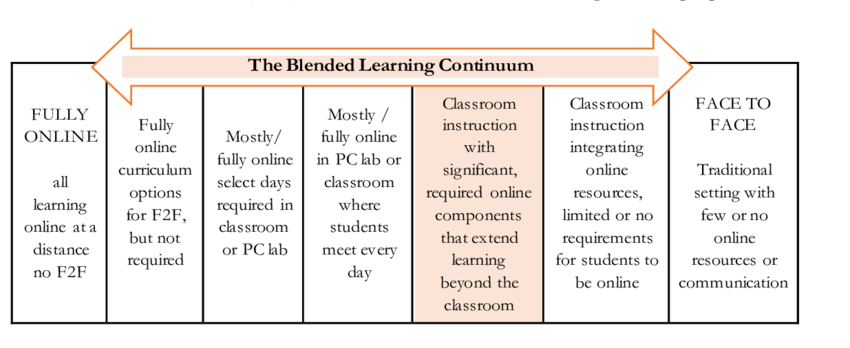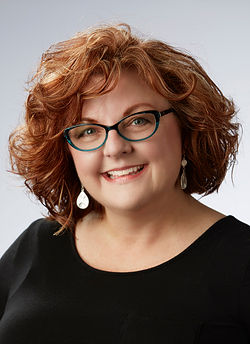Is SAMR Dead?
Potentially a casualty of the COVID-19 pandemic, the SAMR model is evolving to adapt to new learning environments

An incredible tool to think about the integration of technology with instruction was developed in 2010 by Ruben Puentedera when he introduced what we now know as the SAMR model. The acronym stands for Substitution, Augmentation, Modification, and Redefinition, and the intention was to create a shared language across multiple disciplines so that teachers would be able to determine the best use of technology as an instructional tool.
Loui Lord Nelson and Andrew Churches inspired Kathy Schrock to create the image above of the model associating it with the levels of the new Bloom’s Digital Taxonomy.
Many teachers successfully adopted the SAMR model to help them determine the best way to introduce a technology and scaffold learning to the redefinition level. In fact, the Technology Integration Matrix gives a nod to the model in the technology integration levels of the rubric.
However, all that order and intention went out the window for many teachers when the COVID-19 pandemic hit and they were thrust into a technology-required environment with sometimes little professional development or training in the use of digital tools. Additionally, many had minimal knowledge of how to develop lessons for learners who were not physically present. That said, more than 89% adopted technologies and moved into technology-rich environments, according to the Christensen Report Breaking the Mold.
So, it begs the question, “Is SAMR a fatality of COVID?” Have teachers successfully integrated technology to the degree that we can unanimously agree we have redefined learning?
Many teachers acknowledge they are not going to put away the technology they have now become accustomed to having it in their classrooms, but they are also asking for more PD and resources. Districts are continuing to implement a wide-scale digital curriculum and the 1:1 distribution of devices. Some districts are even implementing 2:1, with students having a device at home and school. However, even though technology is more available than ever, and this is truly an edtech leader's dream come true, can we be confident that instruction has changed?
There are two aspects that should be considered before determining SAMR is no longer necessary.
Tech & Learning Newsletter
Tools and ideas to transform education. Sign up below.
First, let’s think in terms of Webb’s Depth of Knowledge when compared with SAMR. When applied this way, SAMR is not linear but rather a continuum. A learner can step into any level of SAMR depending on the activity and where the learner is in their own learning process. An activity may be developed for a learner to recall or reproduce information, or an activity within a lesson could level up to extended thinking. Learners enter at various levels and SAMR acknowledges that variance and suggests the use of technology should adapt to the learner’s needs.

The second aspect to consider is the blended learning continuum, which may be the fastest way to get to the redefinition level of SAMR. Considering the agility of the model and the ability for learners and teachers to move from face-to-face to fully online enables the learning to be more dynamic and more intentional. Engagement increases when learners are exploring their own questions and using technology in a flexible manner to create and explore their own interests related to a particular standard. This certainly allows for a more personalized approach.

Adopting the blended learning continuum and developing lessons designed to expose learners to a continuous variety of activities while enabling them to explore many aspects of problems and approaches to complex problems is the essence of SAMR and it can improve student engagement with the content along the way!
So, SAMR is not dead but rather evolved. We once considered SAMR through the eyes of the teacher and how they used technology for instruction and to develop student activities. This is still true today with the exception that teachers are applying it to redesign whole units of study that incorporate the various levels of SAMR throughout the lesson. However, the real evolution is how SAMR could apply to the role of the student enabling the combination of teacher and technology to facilitate a personal learning pathway. This allows the student to identify whether they are substituting, augmenting, modifying, or redefining their learning tasks through the use of technology. It also encourages the student to be more reflective about the tool being used and how it best applies to a learning task.
We probably aren’t at a complete redefinition level within SAMR because of the lack of PD, training, and time to genuinely reflect on instruction with technology. Students do need to continue learning in digitally rich environments, albeit a balance of print materials and manipulatives is necessary as is the need to have time in teacher and student schedules to attend to basic social and emotional needs. Creating more flexible learning pathways that incorporate the levels of SAMR while embracing the continuum of blended learning will give students the flexibility and freedom they need to create at a new level and redefine their learning experiences!
Dr. Kecia Ray is a strategic thinker and a proven leader in K12 transformation. She serves as Tech & Learning’s Brand Ambassador and is the founder of the consulting service, K20Connect
Dr. Ray's career includes designing technology within the Frist Center for the Visual Arts and directing technology research through Vanderbilt University School of Medicine Science Outreach programs. As a district administrator for Metropolitan Nashville Public Schools, she led the award-winning design, implementation, and evaluation of instructional technology programs, including instructional design for online and blended learning environments, redesigning physical learning environments, redefining school libraries, and establishing the first virtual high school to award the diploma. She leads K20Connect and other passion projects supporting K20 education around the world.

